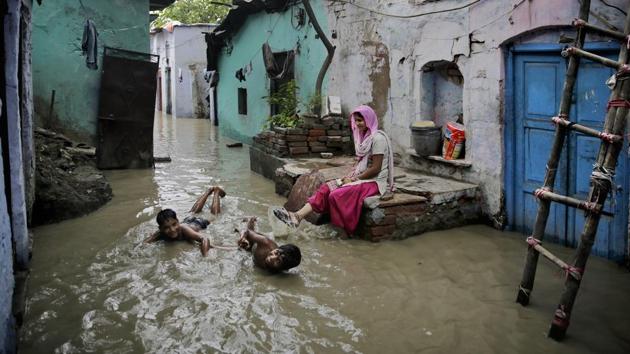Tread carefully when it comes to manipulating natural systems
Whether it is to manage the flood situation of Yamuna or water logging of Kuttanad, we should adopt a similar strategy and promote the “give water its space” concept. Forcing water bodies to give up their space or change their courses, as envisaged in the country-wide river interlinking project will lead to irreversible consequences, learning from the examples before us.
The monsoon is an unsettling time in India, with reports of heavy rains and flooding coming from different parts of the country, including Delhi and Mumbai. In the south, reservoirs are reaching their danger mark and rivers are breaching their banks. In the north, the Yamuna was flowing close to its warning level. These days, any news on rains and flooded roads and homes in metro cities is linked to flash floods and clogged drainage systems. This is partly true, but many other parts of the country are also witnessing such floods and they are not always due to clogged drains.

There are many anthropogenic factors that increase a river’s potential to damage its surrounding areas. Just as the Yamuna laments for its lost space, there are other water systems that are choked by poor water engineering. The choked water bodies of Kuttanad in Kerala’s Alleppey district are an excellent example of how ill-conceived engineering remedies have proven to be counter productive. With its unique geographic location below the sea level, Kuttanad was always prone to water logging but people have lived here for centuries, dealing with excess water. Yet this monsoon has been chaotic. With most homes submerged and crops destroyed, a flourishing landscape with its rich biotic diversity, the “rice bowl” of Kerala is turning to a bowl of sorrow.
Kuttanad was a beautiful piece of land, with its wide expanse of blue waters, fringed by coconut trees. It is still beautiful, but the pace of construction, encroachment, and pollution of water bodies is changing it fast; excessive tourism has been the major culprit. A senior citizen lamented: “Our old Kuttanad had flowing canals and clear waters with plenty of fish swimming in it. Today the water looks like black coffee and there is no fish. What would be left, a few years from now?” His voice choked as he said, “We just want our old Kuttanad back.”
There has been too much of human intervention in Kuttanad, including the construction of the 1.4-km-long ‘Thanermukkam Bund’, an engineering innovation that manipulated nature’s free flow of water. This mud regulator divided the Vembanad Lake into two segments — brackish and fresh water — to prevent the saline water incursion and facilitate round-the-year paddy cultivation. However, the role of the gushing water that flushed the dirt out and replenished the basins with rich silt and clay was perhaps overseen. The natural waterways had supported a rich biodiversity of flora and fauna, including a variety of native fish called Pearl Spot (Karimeen), a pride of Kuttanad’s fishermen.
Today, Kuttanad’s canals remain choked and carpeted by water hyacinths. The fish population is fast disappearing, many varieties are extinct or on the verge of extinction. The bund was constructed to double paddy cultivation, but in an ironic twist of events, fewer people are growing paddy and the fields are shrinking. Tourism has taken over as a much lucrative employment option.
Is Kuttanad’s crisis due to its location below the sea level? We need to turn to the Netherlands with about 50% of its land below sea level to see how they manage floods. A decade ago, they developed a concept, “room for rivers”. The idea, as described by Chris Zevenbergen, a professor at the IHE Delft Institute for Water Education in the Netherlands, is based on the concept of living with water.
Whether it is to manage the flood situation of the Yamuna or water logging of Kuttanad, we should adopt a similar strategy and promote the “give water its space” concept. Forcing water bodies to give up their space or change their courses, as envisaged in the countrywide river interlinking project, will lead to irreversible consequences. We need to start treading carefully when it comes to manipulating the natural systems, especially rivers and water bodies.
Kusala Rajendran is professor at the Centre for Earth Sciences, Indian Institute of Science, Bengaluru, India
The views expressed are personal



